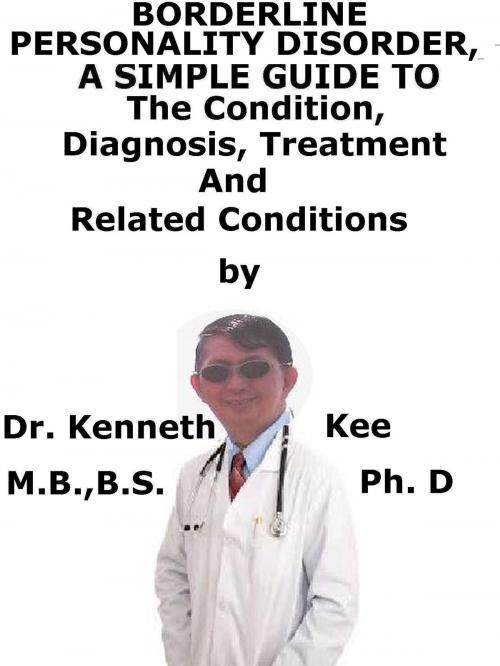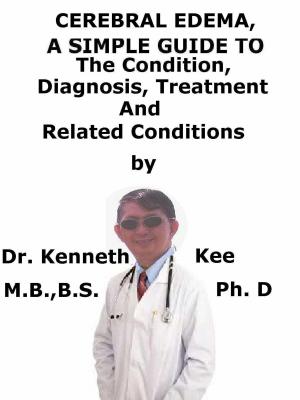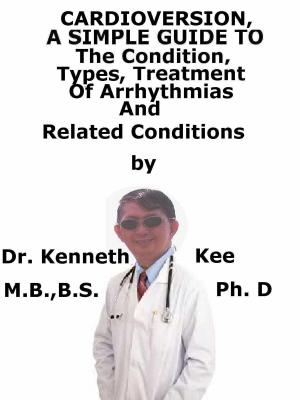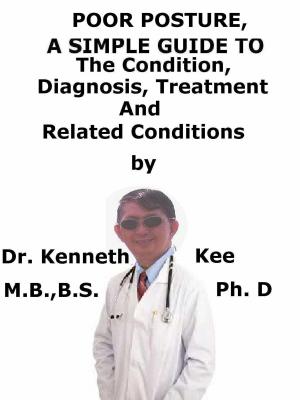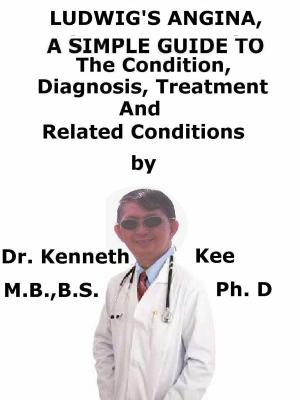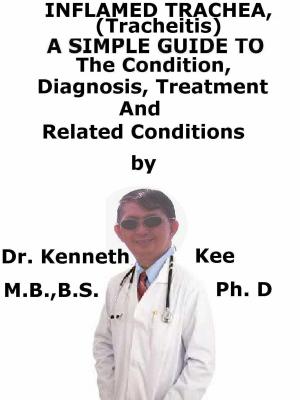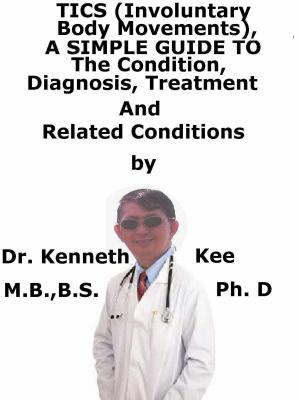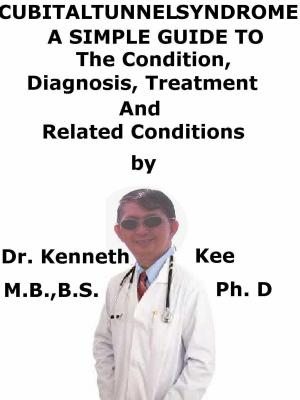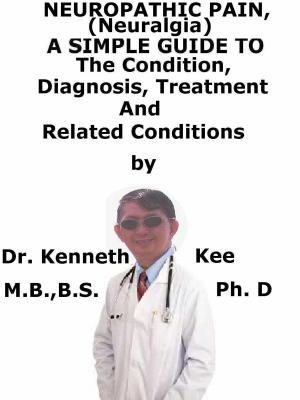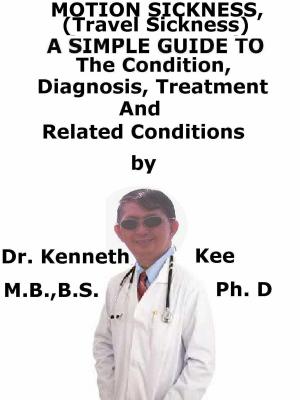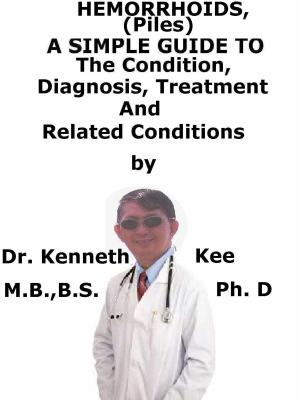Borderline Personality Disorder, A Simple Guide To The Condition, Diagnosis, Treatment And Related Conditions
Nonfiction, Health & Well Being, Psychology, Personality| Author: | Kenneth Kee | ISBN: | 9780463409978 |
| Publisher: | Kenneth Kee | Publication: | September 24, 2018 |
| Imprint: | Smashwords Edition | Language: | English |
| Author: | Kenneth Kee |
| ISBN: | 9780463409978 |
| Publisher: | Kenneth Kee |
| Publication: | September 24, 2018 |
| Imprint: | Smashwords Edition |
| Language: | English |
This book describes Borderline Personality Disorder, Diagnosis and Treatment and Related Diseases
Borderline personality disorder (BPD) is a medical disorder of mood and how a person interacts with others.
It is the most often recognized personality disorder.
Generally, someone with a personality disorder will differ significantly from an average person in terms of how he or she thinks, perceives, feels or relates to others
Borderline personality disorder is a mental illness marked by a persistent pattern of varying moods, self-image, and behavior.
These symptoms often lead to impulsive actions and problems in relationships.
People with borderline personality disorder may have intense episodes of anger, depression, and anxiety that can continue from a few hours to days.
BPD is likely to happen more often in women e.g., Princess Diana.
Causes
The precise cause of BPD is not known.
Genetic, family, and social factors are believed to play parts.
As with most disorders, BPD appears to result from combined genetic and environmental factors.
Problem with brain chemicals
It is thought that many people with BPD have something wrong with the neurotransmitters in their brain, particularly serotonin.
Changed levels of serotonin have been linked to depression, aggression and destructive urges.
Problem with brain development
In many people with BPD, 3 parts of the brain were smaller or had abnormal levels of activity:
1.The amygdale -control emotions
2.The hippocampus–regulate behavior
3.The orbitofrontal cortex–affected in decision making
These parts of the brain are also responsible for mood regulation in people with BPD having close relationships.
Environmental factors
A number of environmental factors seem to be frequent and widespread among people with BPD:
1.Being a victim of emotional, physical or sexual abuse
2.Being exposed to chronic fear or distress as a child
3.Being neglected by one or both parents
4.Growing up with another family member who had a serious mental health disorder, such as bipolar disorder or drug misuse problem
Symptoms
The symptoms of BPD can be categorized into 4 main areas:
1.Emotional instability –affective dysregulation
2.Disturbed patterns of thinking or perception
3.Impulsive behavior
4.Intense but unstable relationships with others
Diagnosis
BPD is diagnosed based on a psychological evaluation.
1.Completing a thorough interview
2.Performing a careful and complete medical examination
3. Asking about family medical histories
Treatment
Many people with BPD can improve from psychological or medical treatment.
Psychotherapy is the main line treatment for BPD
- Dialectical Behavior Therapy (DBT)
DBT uses concepts of mindfulness and acceptance or being aware of and attentive to the present situation and emotional state.
DBT also teaches skills that can help:
1.Control intense emotions
2.Reduce self-destructive behaviors
3.Improve relationships
DBT is based on the idea that 2 important factors add towards BPD:
1.The patient is emotionally vulnerable
2.The patient grew up in an environment where the emotions were dismissed by those around the patient
These 2 factors may cause the patient to fall into a vicious cycle of intense and upsetting emotions
The focus of DBT is to break this vicious cycle:
1.Validation: accept the emotions are valid
2.Dialectics: a school of philosophy that says most things in life are black or white
DBT tries to dispute that self harm is the only way to cope with sadness.
Mentalization-based therapy (MBT)
Mentalization is the ability to think about thinking
Medicines to treat specific symptoms:
1.Mood swings
2.Depression
3.Anxiety disorder
TABLE OF CONTENT
Introduction
Chapter 1 Borderline Personality Disorder
Chapter 2 Causes
Chapter 3 Symptoms
Chapter 4 Diagnosis
Chapter 5 Treatment
Chapter 6 Prognosis
Chapter 7 Narcissistic Personality
Disorder
Chapter 8 Personality Disorder
Epilogue
This book describes Borderline Personality Disorder, Diagnosis and Treatment and Related Diseases
Borderline personality disorder (BPD) is a medical disorder of mood and how a person interacts with others.
It is the most often recognized personality disorder.
Generally, someone with a personality disorder will differ significantly from an average person in terms of how he or she thinks, perceives, feels or relates to others
Borderline personality disorder is a mental illness marked by a persistent pattern of varying moods, self-image, and behavior.
These symptoms often lead to impulsive actions and problems in relationships.
People with borderline personality disorder may have intense episodes of anger, depression, and anxiety that can continue from a few hours to days.
BPD is likely to happen more often in women e.g., Princess Diana.
Causes
The precise cause of BPD is not known.
Genetic, family, and social factors are believed to play parts.
As with most disorders, BPD appears to result from combined genetic and environmental factors.
Problem with brain chemicals
It is thought that many people with BPD have something wrong with the neurotransmitters in their brain, particularly serotonin.
Changed levels of serotonin have been linked to depression, aggression and destructive urges.
Problem with brain development
In many people with BPD, 3 parts of the brain were smaller or had abnormal levels of activity:
1.The amygdale -control emotions
2.The hippocampus–regulate behavior
3.The orbitofrontal cortex–affected in decision making
These parts of the brain are also responsible for mood regulation in people with BPD having close relationships.
Environmental factors
A number of environmental factors seem to be frequent and widespread among people with BPD:
1.Being a victim of emotional, physical or sexual abuse
2.Being exposed to chronic fear or distress as a child
3.Being neglected by one or both parents
4.Growing up with another family member who had a serious mental health disorder, such as bipolar disorder or drug misuse problem
Symptoms
The symptoms of BPD can be categorized into 4 main areas:
1.Emotional instability –affective dysregulation
2.Disturbed patterns of thinking or perception
3.Impulsive behavior
4.Intense but unstable relationships with others
Diagnosis
BPD is diagnosed based on a psychological evaluation.
1.Completing a thorough interview
2.Performing a careful and complete medical examination
3. Asking about family medical histories
Treatment
Many people with BPD can improve from psychological or medical treatment.
Psychotherapy is the main line treatment for BPD
- Dialectical Behavior Therapy (DBT)
DBT uses concepts of mindfulness and acceptance or being aware of and attentive to the present situation and emotional state.
DBT also teaches skills that can help:
1.Control intense emotions
2.Reduce self-destructive behaviors
3.Improve relationships
DBT is based on the idea that 2 important factors add towards BPD:
1.The patient is emotionally vulnerable
2.The patient grew up in an environment where the emotions were dismissed by those around the patient
These 2 factors may cause the patient to fall into a vicious cycle of intense and upsetting emotions
The focus of DBT is to break this vicious cycle:
1.Validation: accept the emotions are valid
2.Dialectics: a school of philosophy that says most things in life are black or white
DBT tries to dispute that self harm is the only way to cope with sadness.
Mentalization-based therapy (MBT)
Mentalization is the ability to think about thinking
Medicines to treat specific symptoms:
1.Mood swings
2.Depression
3.Anxiety disorder
TABLE OF CONTENT
Introduction
Chapter 1 Borderline Personality Disorder
Chapter 2 Causes
Chapter 3 Symptoms
Chapter 4 Diagnosis
Chapter 5 Treatment
Chapter 6 Prognosis
Chapter 7 Narcissistic Personality
Disorder
Chapter 8 Personality Disorder
Epilogue
